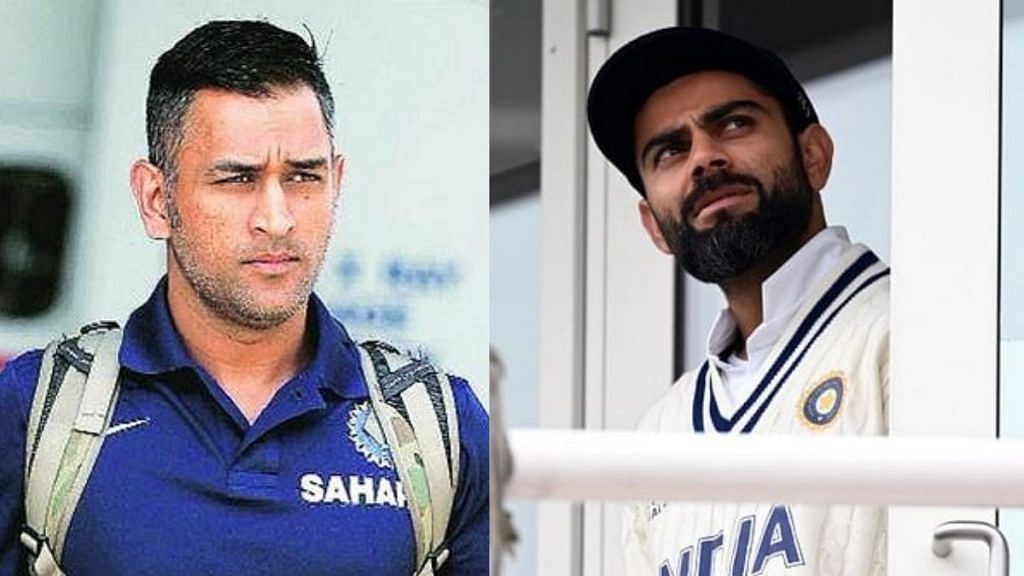Rome was not built in a day, nor was the culture of a professional and timely handover of captaincy in Indian cricket. In fact, it was something whose foundations had just been laid in 2014 by M.S. Dhoni. In Virat Kohli’s recent ‘removal’ and ‘stepping down’ as captain from different formats of the game in the span of three months, Indian cricket has seen the undoing of a culture that was just beginning to make us proud.
In 2014, when India’s most successful red-ball captain until then decided to hang up his boots in the middle of a series against Australia, the Indian cricketing world was taken aback. I don’t blame them. We were used to seeing an entire five-part drama before a captain could be removed — the anointment of a young, in-form talent, followed by a few months/years of well-balanced performances while managing captaincy, then some dip in individual form with little impact on the team’s performance, then came losses both home and away and ultimately the final blow — you gotta make way, captain, it’s time, told the ‘Boss of Control for Cricket in India’.
Also Read: It was never about statistics for Virat Kohli. The cricket ground was a theatre of passion
Dhoni’s two-part narrative
Dhoni’s script, however, was different. He was a great finisher, not just of a match but also of his innings as the captain. In his exit, he sowed and executed an ideal handover culture in the hope that the Aristotelian five-part ‘foul’ play would make way for a modern, ‘refreshing’ two-part narrative — plan and then leave. A win-win situation, unlike the one Indian team finds itself in today — lose (match), lose (series) and lose (leadership). And then play the same opposition but as a team that has wide cracks and gossip in the air that even the stump mics could easily catch.
South Africans know all about it. The dressing room and the captain may choose not to air their views on the opposing team’s weaknesses but once on the field, the mind games do make their way. To keep the negativity of politics outside the dressing room is the biggest challenge Team India faces.
Dhoni was setting a trend rarely witnessed before by those covering the game in India, but preparation for which had been long underway — he had made his markings, discussed his choice with the coach and the way he was going to execute the handover, not waiting for a tragedy to happen — on or off the field. All this without anyone counting the innings he went without scoring a century.
And it worked just fine. Keep aside those missing ICC trophies for once and give it a thought. It achieved a couple of things.
Also Read: Dhoni might be a legend of Indian cricket. But the T20 World Cup is about those on the pitch
Kohli’s exit has set Indian cricket back
Dhoni’s exit execution extended his white-ball career, giving Kohli time to master the red-ball captaincy. Later in the ODIs, you had a captain who was no longer the official leader of the pack playing alongside the designated leader. Think of the opposition’s frustrations. In a team of 11, India had two captains ready — a luxury it just can’t afford for the next few tournaments. And maybe even later, because of the way it has been handled. It puts both Kohli and Rohit Sharma in an awkward situation and demands immense maturity on part of them to be in each other’s shoes — an unnecessary strain on the fabric of the team.
The manner of Kohli’s exit and its handling has pushed the Indian cricket administration back by at least two decades, to the time when the Tendulkars and Azhars had to ping-pong the burden of captaincy. Their two terms as captains, despite poor results, are sometimes cited as a lack of overall talent in the team to stake claim to the leader’s position. But does that hold true today? Every now and then, we hear about the good ‘problem of plenty talent’ Indian cricket is facing. So what failed this time? The answer is the absence of communication.
A side that is ranked as the top Test team goes in to avenge a humiliating series loss at the hands of a team ranked sixth but without its best brain as the captain. He will don the jersey, hold the bat and probably still field in the slips, but won’t call the shots. And what timing too. The next best player is injured and it’s clearly a burden on a stand-in captain who certainly wouldn’t have drawn much inspiration out of his form and loss in the second Test that came barely a fortnight ago. I hope the chokers do what they did some 22 years ago in the 1999 World Cup.
It sure could have been handled better.
While no smooth transition in leadership can guarantee that a team at the top will continue to hold its position, a better-managed change that involves transparency and accountability is sure to go down well with all stakeholders, especially the players who enjoy a special equation with their leader.
For now, Kohli’s exit appears to be a case of a clash of personal ambitions but the casualty is clearly Team India. A Board sitting on a pile of cash, resources and talent would find it hard to explain where it went wrong, especially when the last captain left them a template that didn’t need tampering.
Views are personal.
(Edited by Srinjoy Dey)
